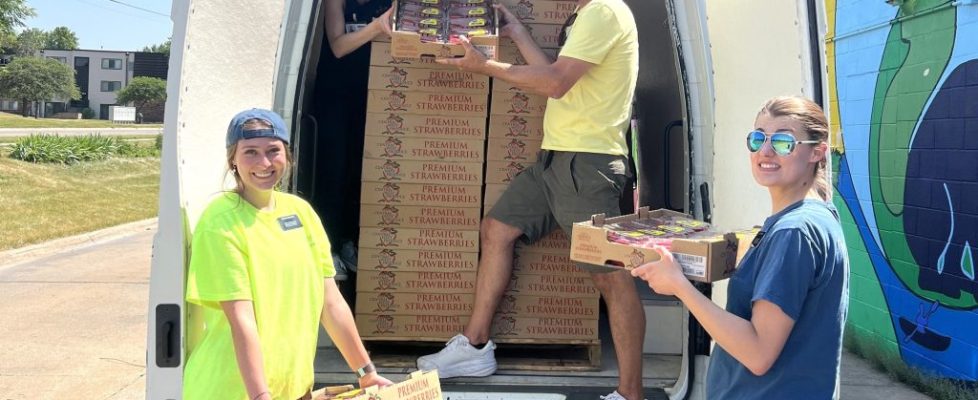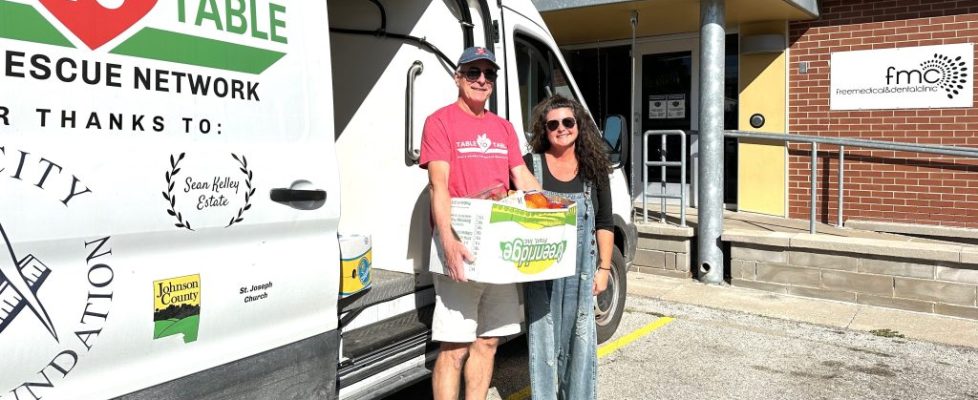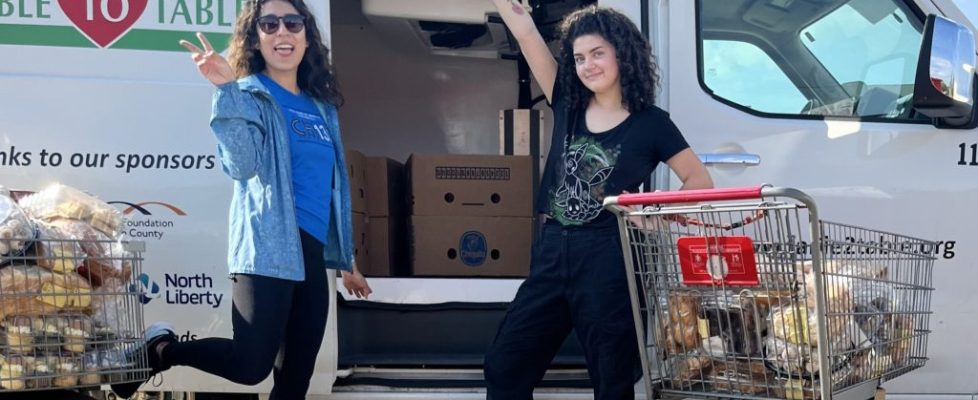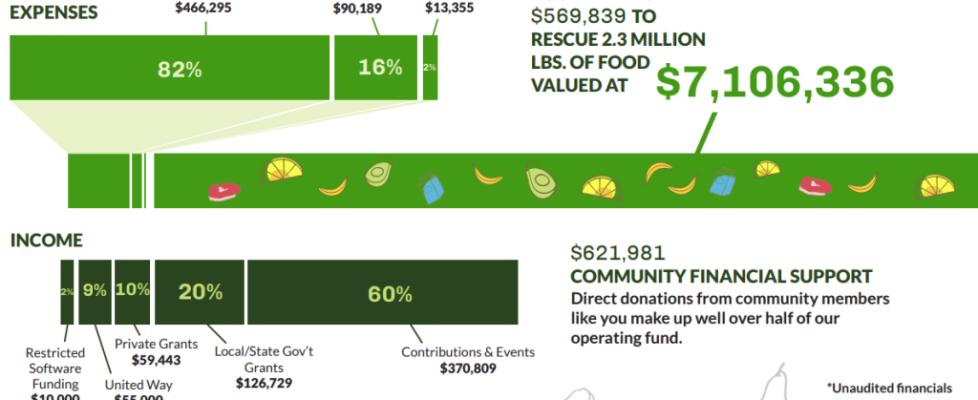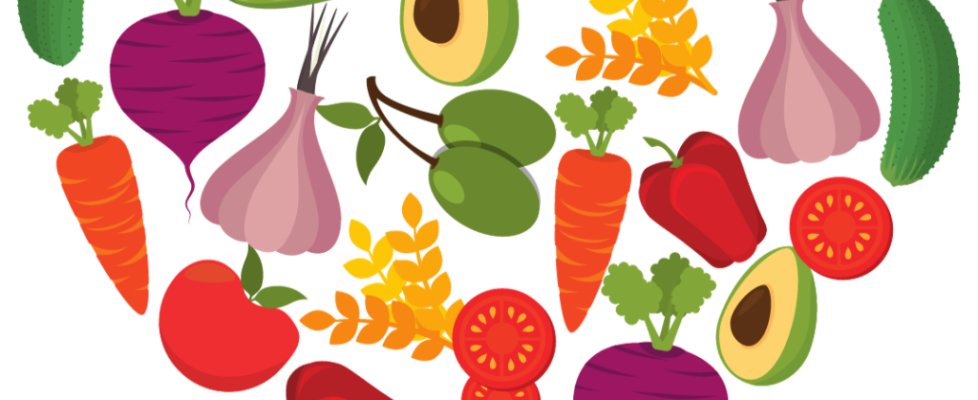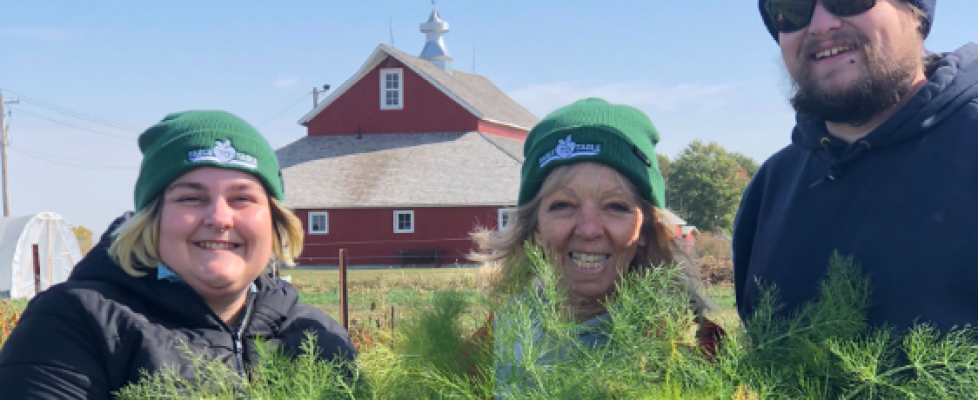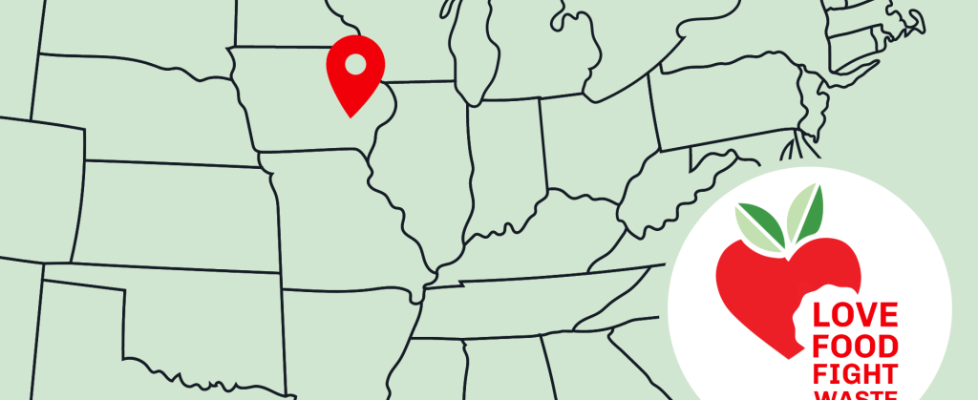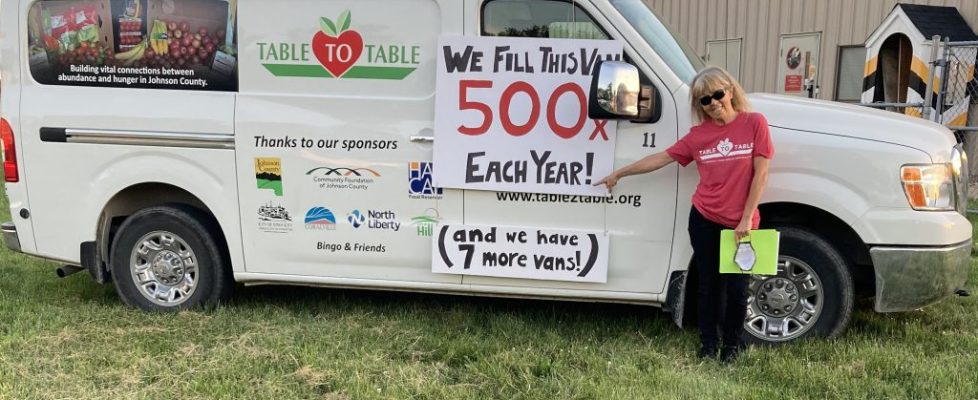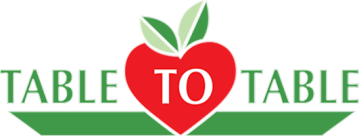Spanning Two AmeriCorps Terms, Marquis Heard Reflects on his Immense Impact at T2T
Marquis Heard joined the Table to Table team for a 2023 Summer term as our Produce Stand Coordinator and loved it so much that he chose to stay on for a full 11 month Green Iowa service term, completing a total of 14 months of service with us. He used expertly crafted media relations to significantly raise the profile of T2T’s environmental work and dedicated much of his time to developing and refining our Overages, Shortages, and Damages (OSD) program that focuses on rescuing food from rejected truckloads in the area.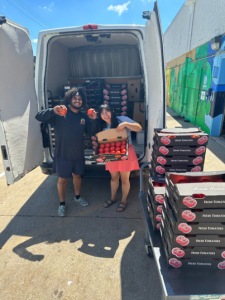
Marquis took the time to reflect on his experiences at Table to Table upon completing his final service term.
I began my first AmeriCorps service term with Table to Table in June 2023. During my three month summer term, I was T2T’s Free Produce Stand Coordinator and was responsible for scheduling and leading over 30 free produce stands hosted in Iowa City, Coralville, and North Liberty. To me, the most memorable aspect of T2T’s free produce stands was the level of community engagement that existed at them. At each stand, it was great to see people connect around produce and share recipes and dishes with each other. It was also nice to see folks stop by the stand and not only take produce for their family, but for neighbors, friends, and others. I feel as if there’s real connection in sharing food with those around you, and that connection goes much deeper than just nutrition. Before I knew it, an entire summer had passed and I had assisted in distributing over 23,000 lbs of produce through the free produce stands. My term was wrapping up around September, and the last thing I wanted to do was move on from Table to Table right as I truly understood a lot of the intricacies that went into T2T and its mission. Fortunately for me, an 11 month Green Iowa AmeriCorps position was available and offered to me which I gladly accepted.

As a Green Iowa AmeriCorps member, my role switched from coordinating free produce stands to wrapping up the gleaning season, and also assisting with developing Table to Table’s OS&D program. Gleaning is the act of harvesting produce that is excess, and may go to waste in the fields otherwise. Table to Table has a strong connection with over 20 local farms and gardens, and these growers contact T2T when there’s produce for the Gleaning Coordinator to arrange to harvest. It was great to see the other side of T2T’s local produce recovery program, to go from distributing the produce at the stands to harvesting and collecting it felt like a well rounded experience for me. I was also able to gain knowledge on how some of the fruits and vegetables I eat everyday are grown, which is something I didn’t take the time to consider prior to my service term. Additionally, I enjoyed forming relationships with all of the local growers, and to see their excitement and passion for growing food, and the amazing volunteers I met on gleans. Table to Table’s local produce recovery is so special because it provides a home for excess produce that growers put so much time and effort into, and that home is directly in the communities it’s grown in.
As mentioned earlier, I also assisted in developing T2T’s growing OS&D program. Similar to local produce recovery, the Overages, Shortages, and Damages (OS&D) program finds a home for food that gets rejected within the trucking/transportation industry. These rejections can happen for many reasons, the truck brought too much of a product, the wrong product, or a pallet in the shipment was partially damaged so the whole load was rejected. Assisting in developing this program was a really unique experience since I was given the opportunity to start at almost square one, and was able to see the thoughts and considerations that go into creating a new food rescue program. I really appreciated the time and consideration that the OS&D team, and the T2T staff as a whole, put into explaining to me the broader aspects of how decisions within a program are made. Through OS&D initiatives, I assisted T2T in accepting 40,000 lbs of potatoes from a farm in Canada, 30,000 lbs of Rice-A-Roni from a local trucking company, and 16 other rejected loads from semi truck drivers. Overall, the program collected over 82,000 lbs of food that would have ended up in a landfill otherwise.
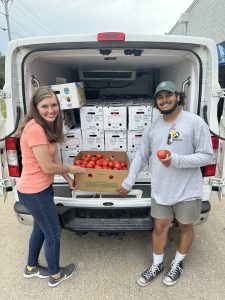
I’m now wrapping up my 14th month serving at Table to Table, and would sign up for another term in a heartbeat if I were able to. In my time at Table to Table, I feel as if I’ve gained countless lifelong experiences, both professionally and personally. T2T truly invests in their AmeriCorps members. Food rescue is ever changing, unpredictable, and sometimes hectic, yet staff still take the time to give even the three month members the best experience possible. It was more than a pleasure to be a part of the T2T team.
We are so thankful for the immeasurable impact Marquis had at T2T during his time with us!
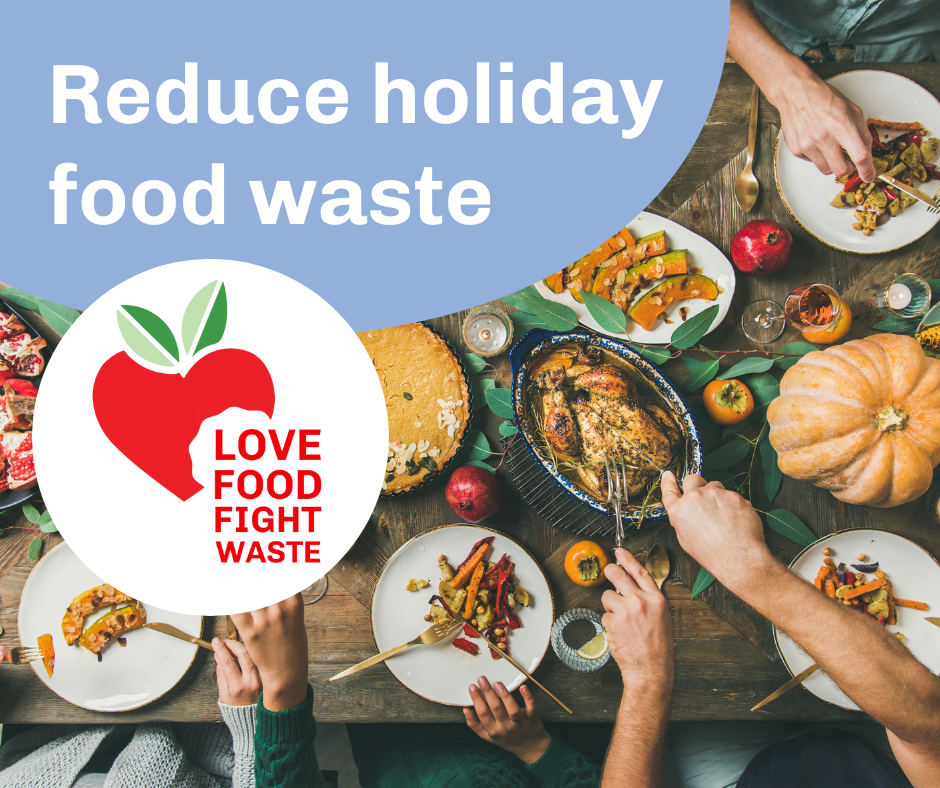
Reduce Your Food Waste this Holiday Season!
During this merry season, you can reduce food waste with these simple tips before, during, and after your holiday gatherings.
SHOP TO REDUCE FOOD WASTE
Before you head to the store…
- Shop your kitchen. Inventory which food items you already have in the refrigerator and pantry to avoid buying duplicates.
- Make a list. What meals or dishes do you plan to make this week? Identify which ingredients you will need and add them to the list.
- Looking for list-making resources? Check out the many available grocery list phone apps, such as AnyList, Mealime, or OurGroceries. If you prefer a paper list, check out this shopping list template.
- Eat a snack or meal. It is important to avoid grocery shopping when hungry as you are more susceptible to impulse purchases and over-buying.
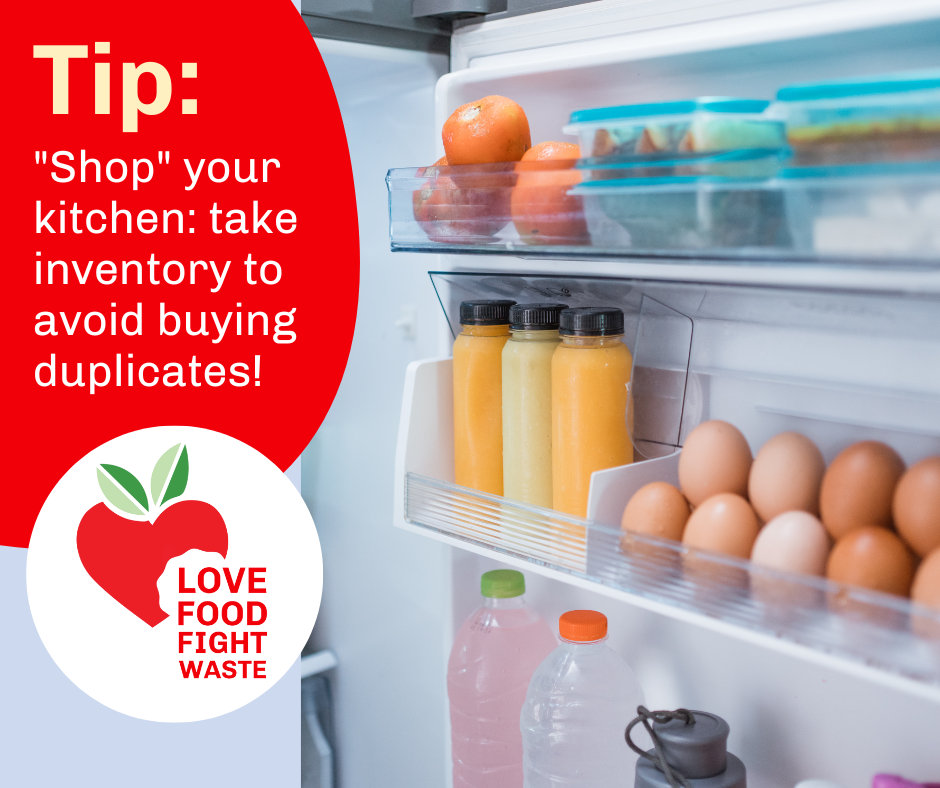
Once at the store…
- Think realistically about items on sale, such as “10 for $5”. It may seem like a tempting deal, but will you actually be able to consume ten? If not, you could end up with food waste, which results in money wasted.
- Control quantity. To have better control of quantity when purchasing produce items, opt for unpackaged fresh fruits and vegetables. (Added climate benefit: you reduce packaging, too!)
CREATIVE WAYS TO KEEP YOUR FOOD FRESH
Milk:
- Avoid placing milk in your fridge door, as the frequent temperature fluctuation from opening the fridge can make the milk go bad faster.
- Did you know that milk is safe to consume for a week past its expiration date (as long as it has been properly refrigerated)? Your “Expired” Milk Still Has So Much More to Give.
- Not sure how to tell if milk is just a little sour or if it is spoiled? Check out this resource to learn more. Sour vs. Spoiled Milk
- Slightly sour milk can be used as a substitute for buttermilk in cooking such items as Sour Milk Pancakes or Sour Milk Biscuits!
- Whole milk can be used to make ricotta cheese. Learn how with Emily from Table to Table.
Cheese:
Store cheese in a colder area of your fridge in a breathable wrap, such as wax paper, which prevents molding.
Bread:
- Freeze bread that you will not use right away.
- Got stale bread? Make croutons, French toast, bread pudding, stuffing, and more with stale bread. Here are a few sources for recipes:
Get to know your fridge:
- Organize food to help you keep track of food that needs to be eaten soon. Use this “Eat Me First” sign to dedicate a section in your fridge for food that is about to go bad and needs to be eaten first.

- Mark opened food containers and leftovers with a date of when it was opened or prepared to help keep track of how soon items need to be used up.
- Be intentional and efficient when you open the fridge door, and make sure it is completely closed when you’re done perusing the fridge. This reduces how much cold air escapes, which means less energy demand to re-cool the fridge.
For more great food waste reduction tips, visit www.icgov.org/lovefood.
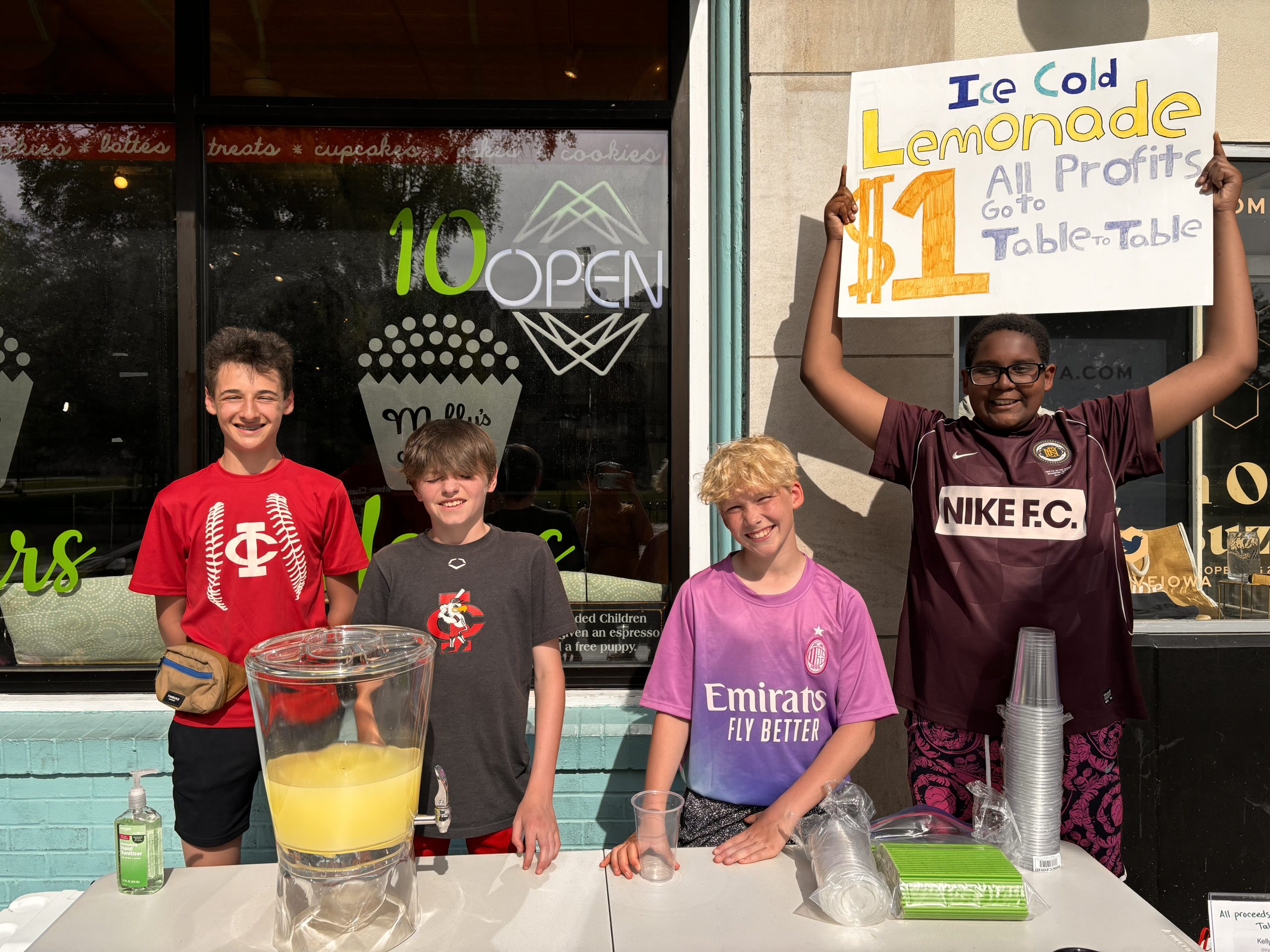
Committed to Quality and Kindness
These stories appear in Table to Table’s 2024 Annual Impact Report!
Dignity: We believe that people and food have inherent value and deserve to be treated with respect. About half the food we collect is “short-dated”, which does NOT mean bad or old. Our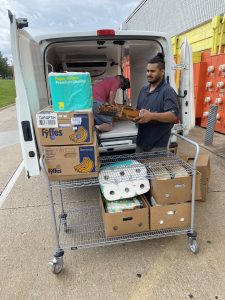 volunteers and those at our food access partners put a lot of effort into ensuring the food quality is good before it hits the shelves. As part of this process, volunteers identified a reduction in quality of produce from a grocer on their route. The T2T team put together visuals that demonstrated preferred quality for different types of produce and shared it with this store (and others). As a result, this partner has become one of our highest performing grocery partners in quality AND amount of produce!
volunteers and those at our food access partners put a lot of effort into ensuring the food quality is good before it hits the shelves. As part of this process, volunteers identified a reduction in quality of produce from a grocer on their route. The T2T team put together visuals that demonstrated preferred quality for different types of produce and shared it with this store (and others). As a result, this partner has become one of our highest performing grocery partners in quality AND amount of produce!
Love: We show love for our neighbors through food and none demonstrates this more clearly than our friend and colleague José who works in the produce department of one of our grocery partners. Sometimes, food for donation is pulled from the shelves after our pick up time. With limited space, it’s likely the store would need to toss it before the next pick up. José couldn’t bear to see it go to waste and began delivering it directly to T2T on his lunch break. That’s the kind of dedication and love for community we need!
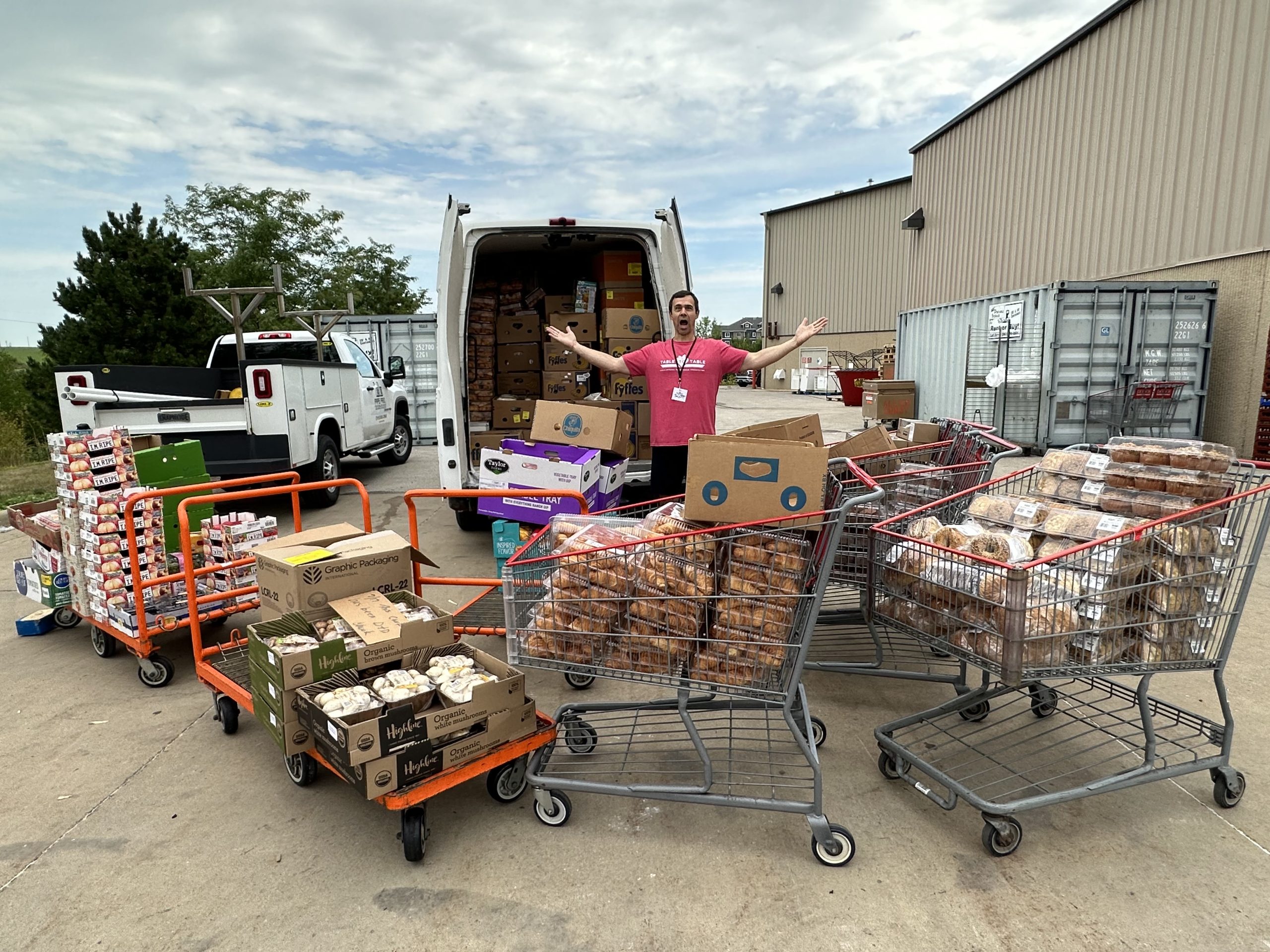
Together, We Strengthen Food Access
These stories appear in Table to Table’s 2024 Annual Impact Report!
Collaboration: This year, we saw the effects of a strong network in several ways.
- When Coralville Pantry’s cooler and freezer went down, T2T offered up extra cold storage space that saved thousands of dollars worth of food and kept pantry doors open.
- CommUnity Food Bank staff used their equipment to unload several large scale deliveries to T2T from trucking companies. This benefited not only their clients, but helped T2T share the bounty with partners across the county.
- So many of our partners stepped up to distribute more than 40,000 pounds of potatoes, including partners like Open Heartland who set up special distribution hours to accommodate the opportunity.
- Using our big truck on a regular weekly route, T2T transported 266,000 pounds of food from HACAP Food Reservoir to CommUnity Food Bank.
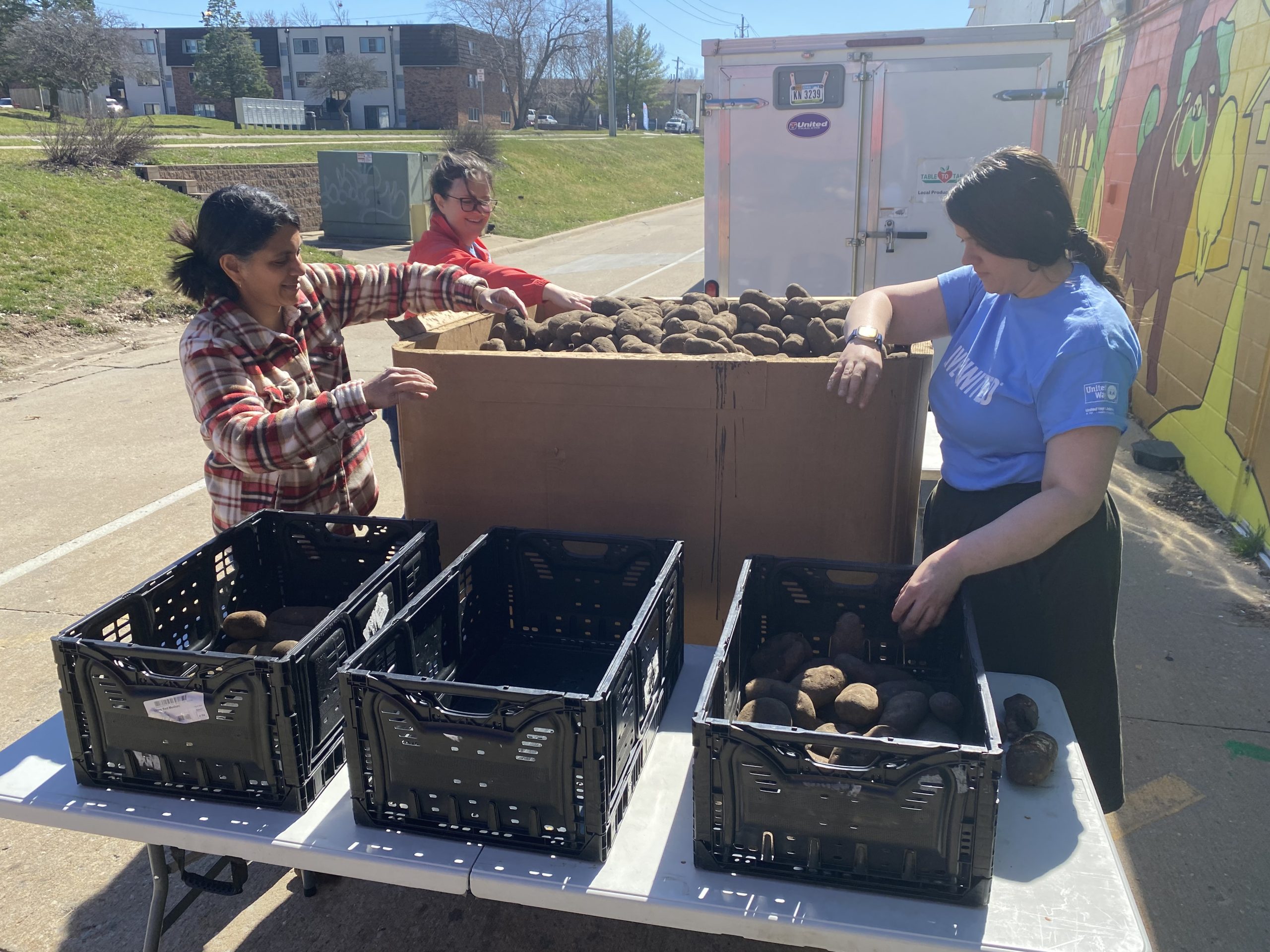
Appreciation: On a route last year, a volunteer learned that one of our biggest partners had food we weren’t receiving because the donor didn’t think we had the capacity. T2T staff leapt into action, set up meetings with the donor, and restructured several routes. Volunteers weathered significant changes to their routes and food access partners adjusted their volunteer schedules to accept the influx of food. All of this effort resulted in a 72% increase in food from that donor! An impossibility without volunteers, partners, or our talented team.
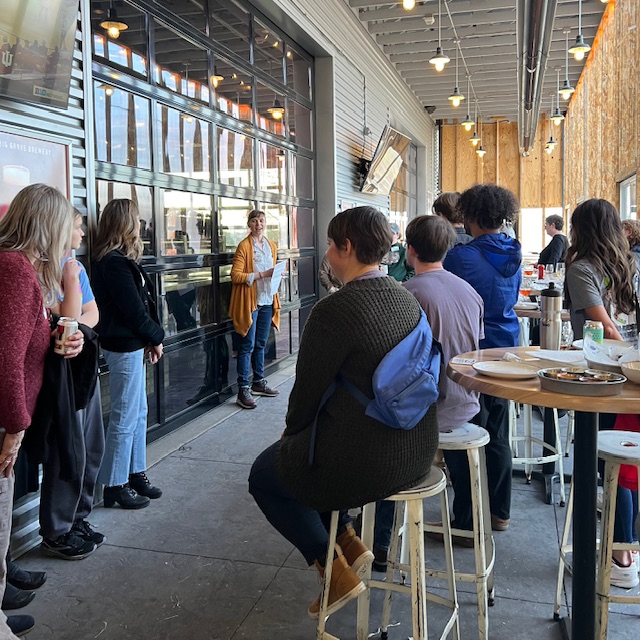
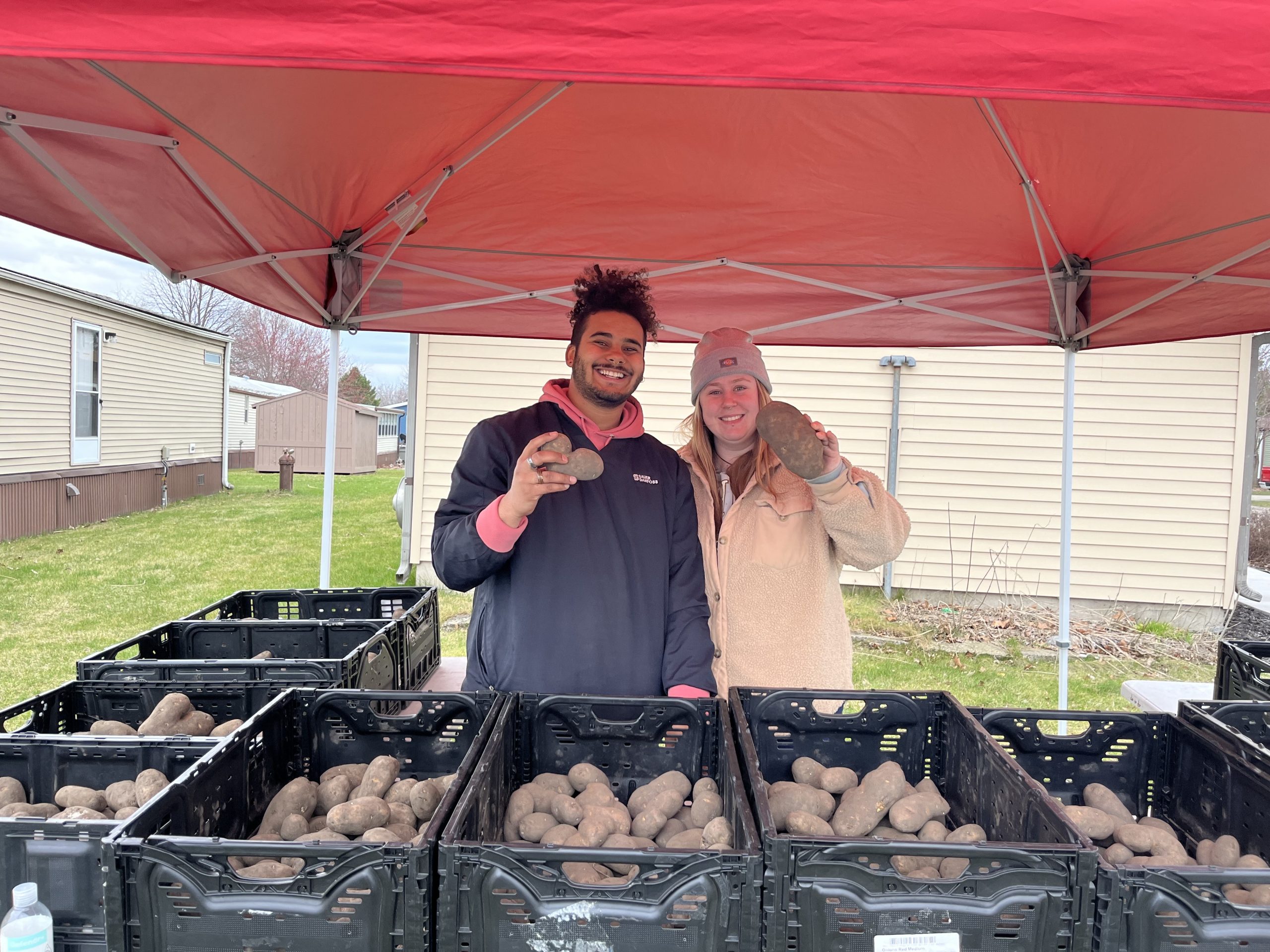
Adaptability Leads to New Initiatives
This story appears in Table to Table’s 2024 Annual Impact Report!
When you picture the mission of T2T – do you see a volunteer walking the aisles of a grocery store or loading up in the parking lot? A cargo van packed to the brim with boxes of food, or a T2T vehicle making deliveries around town? This year, more than 100 volunteers each week dedicated 8,300 hours to our route based food rescue program.
Routes represent 66% of the food we recover, but did you know that nearly 1 million pounds of food comes from our expanded food rescue initiatives? This includes harvesting from local farms, gardeners, food processors, warehouses, and even the food transportation industry. By expanding our team and building new partnerships, we said “yes” to more food rescue opportunities than ever before. Take a look below at the results of a few key initiatives.


